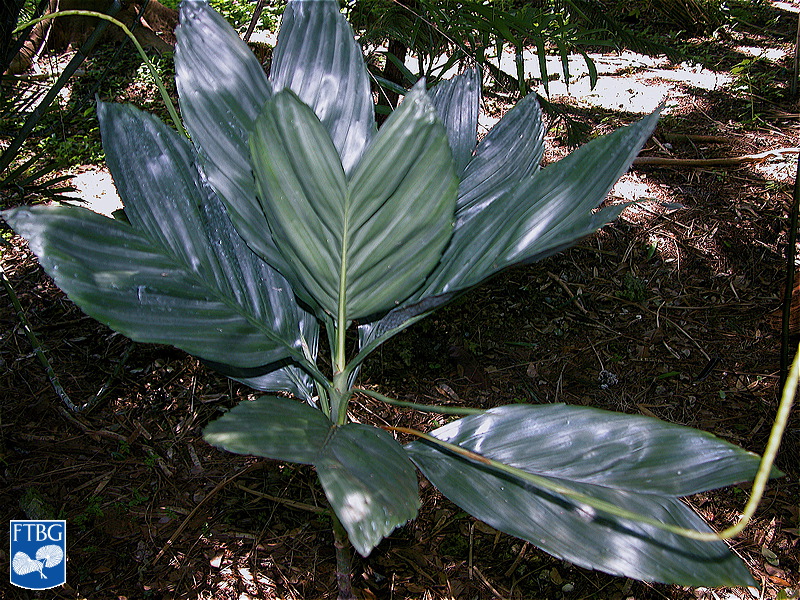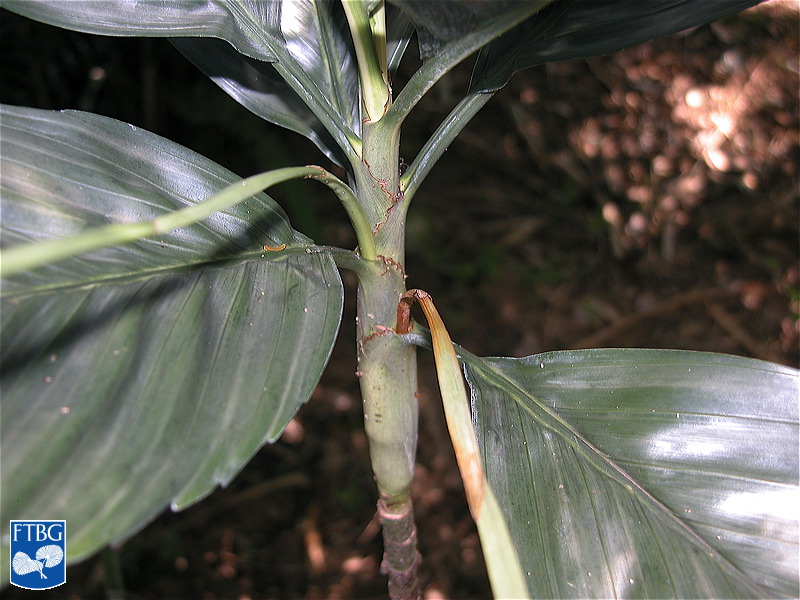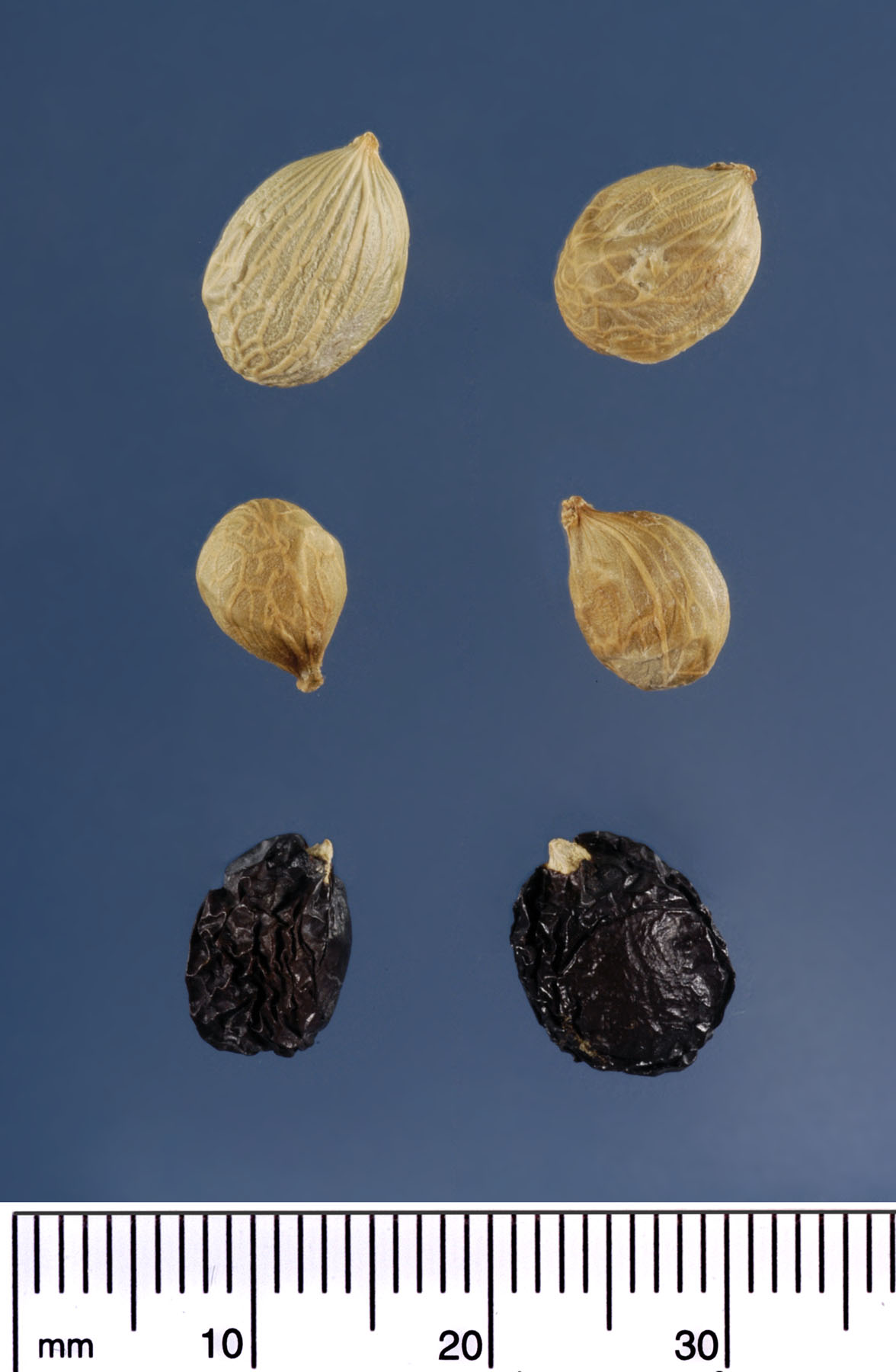Chamaedorea metallica
|
Chamaedorea metallica habit. Photograph courtesy of Fairchild Tropical Botanical Garden, Guide to Palms http://palmguide.org/index.php |
|
Chamaedorea metallica stem. Photograph courtesy of Fairchild Tropical Botanical Garden, Guide to Palms http://palmguide.org/index.php |
|
Chamaedorea metallica leaves and inflorescence. Photograph courtesy of Fairchild Tropical Botanical Garden, Guide to Palms http://palmguide.org/index.php |
|
Chamaedorea metallica seeds (above) dried fruits (below). Photograph courtesy of Mariana P. Beckman, DPI |
Common name
metallic palm, mini-fishtail palm
Description
Stems: Solitary, erect stems, 0.5-3 m tall, 0.5-2.5 cm in diameter and ringed with narrow bands of leafleaf:
in palms -- the leaf blade (which is usually divided into leaflets or leaf segments), the petiole (or leaf stalk) and the sheath (which forms the attachment of the leaf to the stem)
scars. Adventitious roots form near the stem base. Leaves: Pinnately veined, reduplicatereduplicate:
Most palm leaflets or leaf segments are obviously folded. If the folds create an upside-down V-shape, with the margins lower than the midrib (so that rain might "run off the roof"), the folding is reduplicate.
, two-lobed with a ruffled or puckered upper surface between veins (which may create a two-toned appearance, but is not true variegation). Upper and lower leafleaf:
in palms -- the leaf blade (which is usually divided into leaflets or leaf segments), the petiole (or leaf stalk) and the sheath (which forms the attachment of the leaf to the stem)
surfaces are metallic blue-green and clustered near the tip of the stem. Flowers and fruits: Inflorescenceinflorescence:
the reproductive structure of a flowering plant, including palms, consisting of flowers and associated bracts
erect, with 10-12 green branches on palms with staminatestaminate:
a flower bearing stamens but no pistils; a “male” flower
flowers and a single spike (or sometimes a few branches) on plants with pistillatepistillate:
a flower bearing a pistil but no stamens; a “female” flower
flowers, turning red-orange when in fruit. Orange male and female flowers are borne on different plants. The spherical to egg-shaped fruits (1-1.5 cm in length) are black when ripe.
Diagnostic features
Field: Small, solitary palm; leaves simple, two-lobed, with a metallic blue sheen
May be confused with
Chamaedorea ernesti-augusti is also a small, solitary palm with two-lobed leaves but without the distinctive metallic blue sheen of C. metallica.
Distribution
Native to eastern Mexico in lowland rainforests
Scientific name
Chamaedorea metallica O.F.Cook
Family
Arecaceae/Palmae
Synonyms
none






